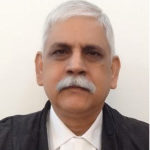Disproportionate assets case – points of merits for discharge application
Tilak Marg Forum for Legal Questions › Forums › Criminal Law › Disproportionate assets case – points of merits for discharge application
Tagged: Disproportionate assets
- This Question has 1 reply, 2 voices, and was last updated 6 years, 8 months ago by
 Dr. Ashok Dhamija.
Dr. Ashok Dhamija.
-
AuthorPosts
-
-
September 14, 2018 at 1:51 pm #4927
 Dr. Ashok DhamijaAdvocate
Dr. Ashok DhamijaAdvocateLet me explain the points raised by you with regard to the computation of assets, expenditure and income in a case of disproportionate assets under Section 13(1)(e) of the Prevention of Corruption Act, 1988.
(1) Where a car has been taken on loan, the correct principle is to show the value of the car in the assets, the amount of loan taken in income, and the loan repaid so far (including interest, if any) in expenditure.
(2) If the father of the public servant is himself in service, and if his assets are added to the assets of the son, then the income of the father is also required to be added to the income of the son. The same thing may apply to expenditure too. The reason in such a situation is that a combined comparative chart of income, expenditure and assets is prepared. This may become necessary in a case where the son is indulging in corruption and is suspected to have purchased assets in the name of his father who may himself be a public servant. If the father’s assets are disproportionate and it is suspected that the father himself was also indulging in corruption as a public servant, then sometimes, a separate case of disproportionate assets may be advisable against him, instead of clubbing together his details with those of the son.
(3) If any benefit has been made available to the public servant under LIC policy, it should be taken as an income.
(4) Generally, the non-verifiable expenses are calculated at one-third of the gross salary, but taxes paid such as Income Tax are usually deducted while doing this calculation. This principle evolved on the basis of the judgment of the Supreme Court in the case of State of Punjab v. Sajjan Singh, AIR 1964 SC 464, but the language used in this judgment is vague, as can be evident from the following extracts from this judgment:
“27. … The total amount received by the appellant throughout the period of his service has been shown to be slightly less than Rs 80,000. The appellant claimed to have received considerable amounts as travelling allowance as Overseer and SDO and also as horse and conveyance allowance. …”.
“29. The total receipts by the appellants from his known sources of income thus appear to be about Rs 1,03,000. If nothing out of this had to be spent for maintaining himself and his family during all these years from 1922 to 1952 there might have been ground for saying that the assets in the appellant’s possession, through himself or through his son (Rs 1,20,000) were not disproportionate to his known sources of income. One cannot however live on nothing; and however frugally the appellant may have lived it appears to us clear that at least Rs 100 per month must have been his average expenses throughout these years taking the years of high prices and low prices together. These expenses therefore cut out a big slice of over Rs 36,000 from what he received. The assets of Rs 1,20,000 have therefore to be compared with a net income of Rs 67,000. They are clearly disproportionate indeed highly disproportionate.”
“30. Mr Lall stressed the fact that the legislature had not chosen to indicate what proportion would be considered disproportionate and he argued on that basis that the Court should take a liberal view of the excess of the assets over the receipts from the known sources of income. There is some force in this argument. But taking the most liberal views we do not think it is possible for any reasonable man to say that assets to the extent of Rs 1,20,000 is anything but disproportionate to a net income of Rs 1,03,000 out of which at least Rs 36,000 must have been spent in living expenses.”
Therefore, from the judgment, it appears that if his salary is considered as ₹ 80,000, then expenses of ₹ 36,000 is much more than one-third. Further, at one place the Supreme Court says that “total receipts by the appellants from his known sources of income thus appear to be about Rs 1,03,000”, and at another place the Court says “a net income of Rs 1,03,000”. But, here also, it is mentioned as “net income” or “total receipts”, which may include other incomes also (i.e., other than salary).
So, keep all these issues in mind when you claim that one-third of net salary is required to be taken.
[NOTE: Dr. Ashok Dhamija is the author of a comprehensive book on corruption, namely, Prevention of Corruption Act, Second Edition (2009), appx. 2250 pages, published by LexisNexis Butterworths Wadhwa, New Delhi (ISBN: 978-81-8038-592-6).]
Dr. Ashok Dhamija is a New Delhi based Supreme Court Advocate and author of law books. Read more about him by clicking here. List of his Forum Replies. List of his other articles. List of his Quora Answers. List of his YouTube Videos.
-
-
AuthorPosts
- The forum ‘Criminal Law’ is closed to new Questions and replies.

